Augmented reality? Pogue checks out 7 of the first iPhone AR apps
There’s been a lot of hype around virtual reality. That’s where you strap on hot, heavy, expensive goggles and look around you in any direction to see a simulated world. It’s great for games, but super isolating.
For my money, augmented reality (AR) is the bigger deal. That’s where you can still see the real world, but the computer superimposes graphics on it. As you look around, the sizes, angles, and distances of the simulated objects smoothly change in real time as though they really exist. (Pokémon Go is an AR app. So is Snapchat when it adds goofy glasses and antennae to your live image.)
Earlier this year, Apple gave AR a huge boost with its release of ARKit, a set of tools for software companies that make it easier to develop AR apps. Using these tools, it took Ikea just 10 weeks to come up with Ikea Place, an app that lets you try out Ikea furniture in your actual home and inspect it from different angles. “Apple has solved things from both a software point of view and a hardware point of view, so they have the full spectrum,” says Michael Valdsgaard, Ikea’s director of digital transformation. “Nobody else has that.”
Last month, Apple released iOS 11, required to use all of the new AR apps— and, in effect, made the iPhone the most common AR platform on Earth.
Now the apps themselves are reaching the app store. Plenty of them are games, of course, and that’s great—but I wanted to see if these apps can actually be useful. Software companies have had only 12 weeks to write these apps, so they’re mostly fairly simple. I thought I’d sample the first wave and give you a report.
Ikea Place (free)
Ikea Place presents you with a catalog of living-room furniture. “We know that people often struggle. They don’t know if they’re picking the right color, the right style,” says Valdsgaard. “It’s an investment, so most people postpone the purchasing decision because they’re not 100 percent confident. We’ve focused on the living-room setting, which is where we think people need the most help, as the earliest.”
You tap the piece of furniture you want, choose a color for it, and then tap the iPhone or iPad screen to plop it down on the floor. At that point, you can drag to move it around, or twist with two fingers to rotate it.

The realism isn’t perfect. Some of the furniture clearly looks computer generated, without enough detail to sell fabric and leather as real. (Wood and metal surfaces are more believable.) But the size, angle, and walk-around smoothness of the app are extremely authentic. Ikea Place is somewhere between “fascinating experiment” and “useful tool.”

Similar apps include Houzz Interior Designs and Overstock Shopping.
Porsche AR – Imagine (free)
As a sales tool, this app is pure genius: It lets you see exactly what a red $90,000 Porsche Boxster convertible would look like in your driveway. Or garage. Or bedroom, for that matter.
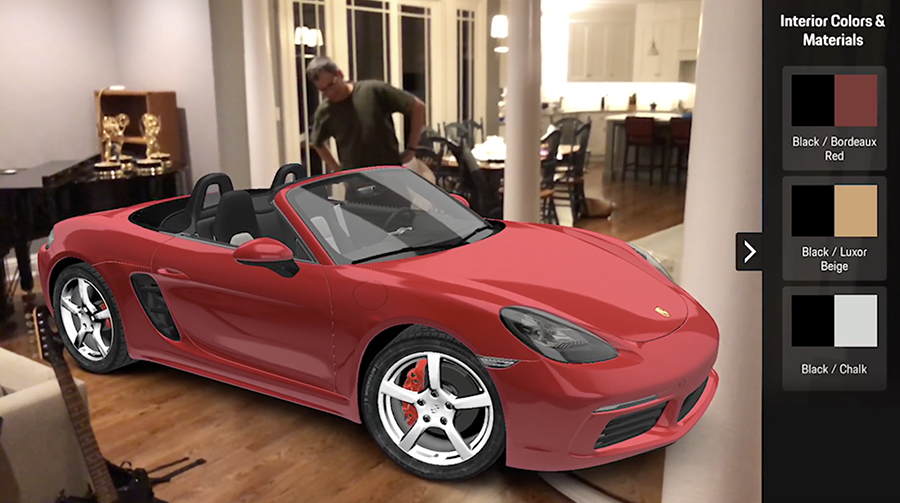
The app prompts you to move the phone around a little bit to get its bearings and then offers you a choice of three Porsche models. You tap to drop it where you want it.
At that point, there it is before you: A cherry-red, shiny, spotless, unbelievably detailed car, full size. You can walk around it, lean over to look inside it, even stick your hand or foot underneath the body; every aspect of these interactions looks believable.
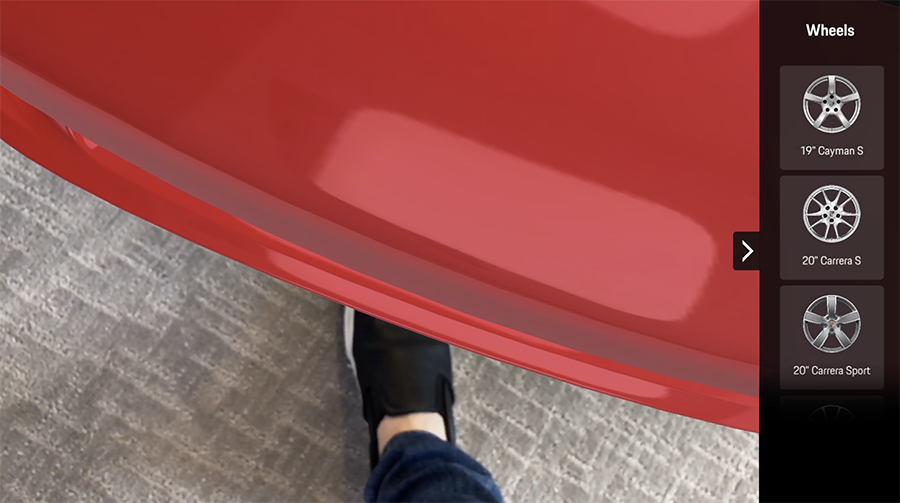
Everything, that is, but the four big + buttons (below). They open a side panel with which you can change the car model, body color, interior color or hubcap style. I wished there were a mode that hides both the + buttons and the side panel for an uninterrupted full-screen view of the car—but alas.
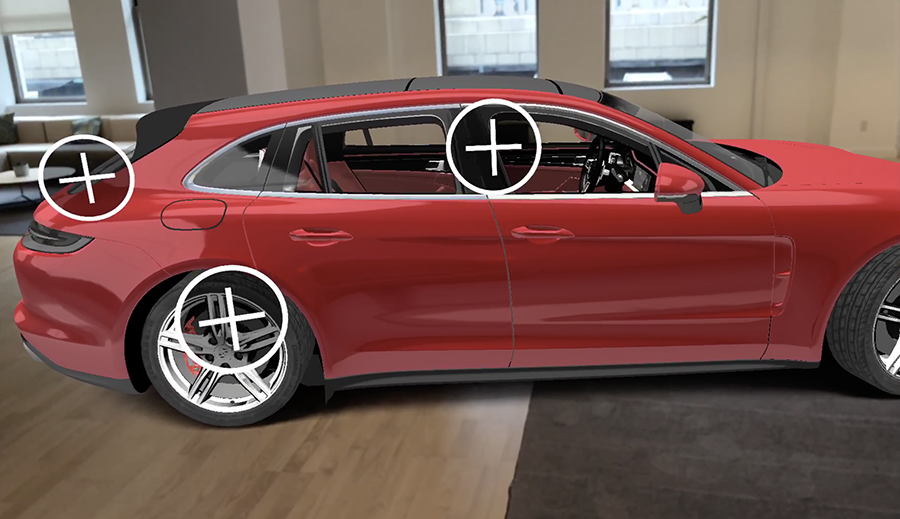
My guess is that more people buy Ikea furniture than Porsches, and that’s not going to change with the release of this app. But this app is a fantastic AR demo that never fails to blow people’s minds.
shARk (free)
Same idea as the Porsche app, except that in shARk by Curiscope, the virtual object on your screen is a tiger shark, realistically swimming—through the air. There’s more action with this app, because you have to walk around, moving the phone, to find the shark, because it keeps swimming offscreen. You can tap the screen to drop a little floating piece of food to attract the shark. And if you get bored of the tiger shark, you can pay to install a great white instead.

So, yeah—the novelty wears off fairly fast. But it’s super fun. And don’t tell me your heart didn’t pump just a little faster as that thing came at you.
Similar apps include AR Dragon and Walking Dead AR.
Very Hungry Caterpillar ($3)
It’s the popular kids’ book character, turned into an animated caterpillar crawling through your actual world. Watch him hatch, feed him fruit, observe him getting bigger —and, yep, change into a butterfly. Little kids dig it; it’s a gentle, death-free introduction to video games.

MeasureKit AR
This app gives you a virtual tape measure. Point at one corner of a table or TV, tap to anchor the “tape measure,” then point at the opposite corner, and boom: An onscreen line, drawn crisply in white, shows you that distance in feet and inches (or meters and centimeters). If you pay a couple of bucks, you can unlock additional modes, like the person-height measurer.
Sometimes, its measurements are right on the nose. Other times, it seems off by a couple of inches, and I’m not sure if it’s me doing something wrong. But in all cases, it comes close.
Similar apps: PLNR (generates floor plans of a room quickly and easily), Magicplan, Survey, aRuler, ARMeasure.
Hair Color by Modiface (free)
This one’s as simple and useful as can be: Use your phone as a magic mirror. Tap a new hair color from the scrolling palette at the bottom of the screen, and see how you’d look with that dye job.
Somehow, the app knows exactly what, on your live video image, is hair.
You get about 22 colors for free—blonde, red, brunette, and so on, as well as pinks, blues, greens and purples (You can pay a couple of bucks to unlock a lot more). You can tap the screen to grab a screenshot at any point, with which to freak out your parents. Really good app.
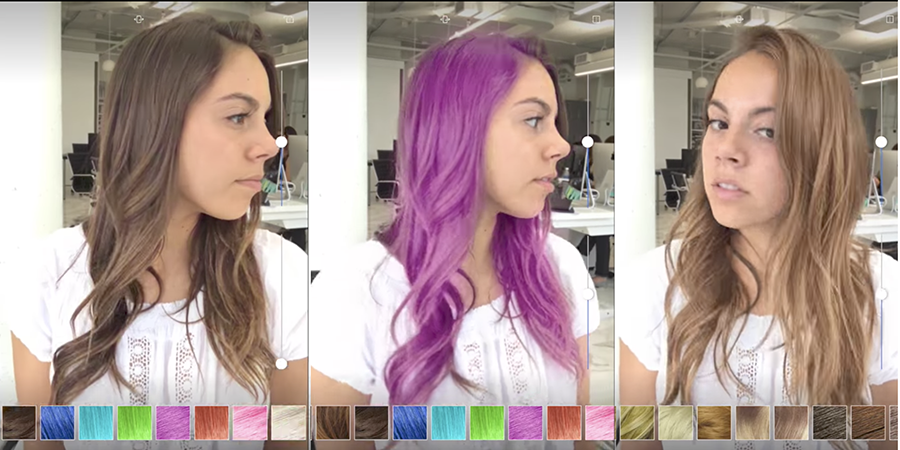
Night Sky 5 (free)
This app lets you point your phone at the sky and see the stars—labeled and, in the case of constellations, conveniently connected by line segments. It works during the day or at night. It’s a perfect use of AR, because it provides ordinarily invisible information about whatever you’re looking at.
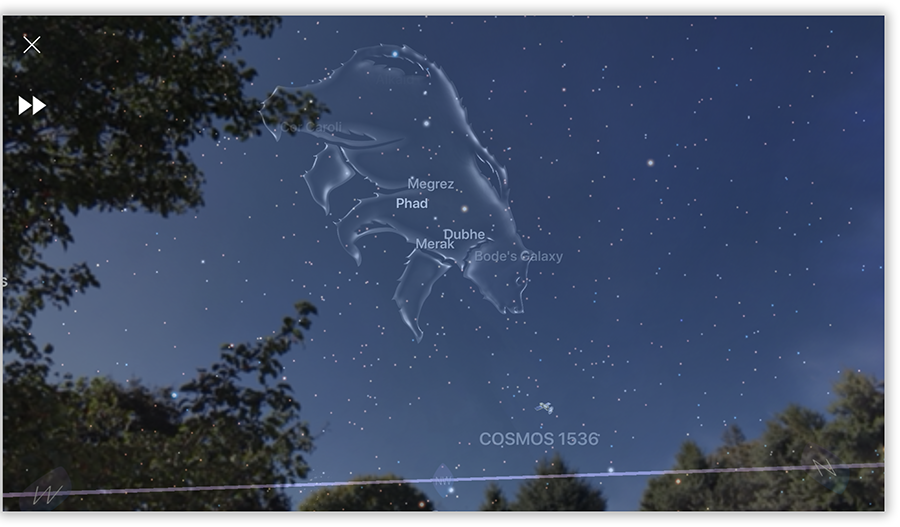
Try Sky Guide AR for something similar.
AR’s future
If these examples are what people can come up with in 12 weeks, imagine what we might see a year from now.
The world is full of people, places, and things with hidden stories to tell. Imagine an app that identifies the repair history of a used car you’re considering buying. Or an app that you can hold up to your airplane window (or the floor beneath your seat) that labels the cities and streets below. Or an app that shows how you’ll look after plastic surgery. Or one for house hunters that shows your furniture in an empty house you’re considering. Or a navigation app that shows you, with AR arrows floating above the real-world sidewalk, which way to walk. (No more emerging from a building or a subway, baffled at Google Maps’s instructions because you’re not sure which way you’re facing.)
The mind reels. I can’t wait until there’s more augmented reality in our reality.
David Pogue, tech columnist for Yahoo Finance, welcomes non-toxic comments in the Comments below. On the Web, he’s davidpogue.com. On Twitter, he’s @pogue. On email, he’s [email protected]. You can read all his articles here (https://www.cerveza-artesanal.com/news/david-pogue/), or you can sign up to get his columns by email (https://j.mp/2mCizxV).
